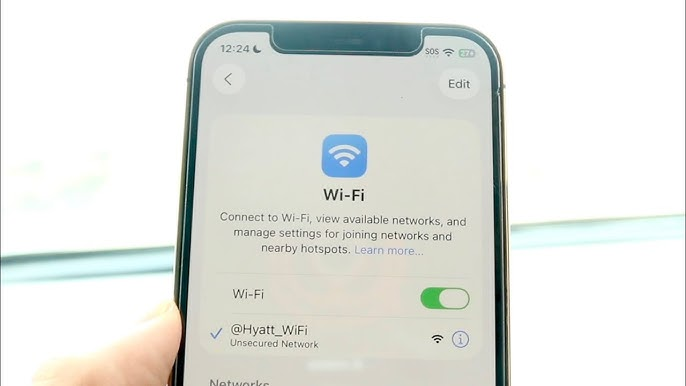タイル商人が1年間NFTアーティストに変身した背後にあるロジックと考え方
原作者: ヤッピー爺さん
この記事は WeChat 公開アカウントからのものです。古いヤッピー古いヤッピー
、Odailyの許可を得て再掲載。"Art Blocks"エリック・カルデロンは、ジェネレーティブ・アートへの情熱に集中することを決めた昨年までタイルのビジネスに携わっていました。彼は、2021年初頭にNFTブームが始まって以来、最も成功したNFTプラットフォームの1つを作成しました。それは知られている
"。部外者にとっては長い道のりのように思える変革も、カルデロンにとっては自然なことだ。長年にわたり、彼はビジネス、アート、コーディングへの興味のバランスを保ってきました。"ずっとアーティストになりたかったのですが、"カルデロン氏はこう語った。"しかし、私は手で何かを描くことができませんでした。"それが、本質的に起業家であるカルデロンがタイル事業に参入した理由の一部です。デザインに取り組むことは充実していますが、十分ではありません。約 10 年前、妻の勧めで、彼は以前の情熱であるコーディングを探求し始めました。これは、7 歳の頃から断続的に取り組んでいました。"私はビジュアル出力のプログラミングを始めましたが、それが非常に楽しいことに気づきました。"カルデロン氏は語った。"
少なくとも私がクールだと思うものを作るのに、ブラシの使い方を知る必要はないことに気づきました。"コードを使用してアートを作成する方法を模索する中で、彼はプロジェクション マッピング、3D プリント、そして最終的にコードが実行されるたびに独自の画像を生成するジェネレーティブ アートを紹介しました。カルデロンはそれができると考えている"一度実行すれば 100 万回の出力が得られます
、これは信じられないほどです。彼が Instagram でフォローしていたジェネラティブ アーティストたちは彼のヒーローになりましたが、その作品が 1 つのソーシャル メディア投稿として現れるのを見るのは落胆しました。彼は、ジェネレーティブ アートを作成して販売するためのもっと良い方法はないかと考えました。暇がなくなったので、彼はこれらの趣味や心配事をしばらく横に置いておかなければなりませんでした。
2017 年、カルデロン氏は、ビジネスの経営と幼い子供の世話の合間に、仮想通貨についてもっと学びたいと考えて Reddit に潜み始めました。彼をさらに興奮させているのは、NFT に関する話題であり、それがジェネレーティブ アートの価値を生み出す方法になるのではないかと彼は考えています。そしてある夜、彼は Larva Labs の創設者であるマット ホールとジョン ワトキンソンが新しいプロジェクトである CryptoPunks を主張するよう人々に奨励している Reddit のスレッドを偶然見つけました。"当時、CryptoPunksは無料でした。そこでカルデロン氏は35ドルの取引手数料を支払って一部を請求した。彼はゾンビのジャンルが特に興味深いと考えています。"ジェネレーティブ アーティストとして、CryptoPunks はジェネレーティブ アートの優れた例だと思います。"カルデロン氏は語った。"誰かが、24 x 24 ピクセルの画像で、ストーリーのある 10,000 人のユニークなキャラクターを作成できるアルゴリズムを書きました
。彼は自分が何百万ドルもの資産を持っているとは想像もしていませんでした。"初めてデジタル画像を撮ったのですが、"彼は言った。"彼は言った。"
その感覚は革命的でした。"カルデロン氏は、NFTが主流市場に参入しようとしているのを観察し続けており、これらのプロジェクトは興味深いものの、ブロックチェーンの利点を実際には活用していないと考えています。"2017年から2020年までにリリースされたプロジェクトの90%は「四角い角釘、丸穴」であり、"カルデロン氏は語った。"
2018 年、カルデロン氏は、アイデアに協力してくれる開発者に支払うために、CryptoPunks ゾンビを 1 体あたり 200 ドルで販売し始めました。彼は、ジェネレーティブ アート用の NFT 鋳造プラットフォームに対するビジョンを持っています。彼はそれをアートブロックと名付けました。 Calderon のプラットフォームでは、ジェネレーティブ アーティストがアルゴリズムをアップロードし、独自のイテレーションを NFT として販売できます。購入者はサイトにアクセスし、サンプルのギャラリーから好みのアルゴリズムを選択し、ボタンを押すことができます。"コイン"コイン
、具体的にどのようなピースが得られるかはわかりません。コインが鋳造されると、ブロックチェーンはアルゴリズムとそれがどのように機能したかを正確に記録し、唯一無二の作品を作成します。これは、コード自体の特定の芸術的プロセスを文書化しながら、生成アートワークの出所を作成する革新的な方法を表しています。"一貫性のあるユニークなジェネレーティブ アートを制作することは、思っているほど簡単ではありません。ジェネレーティブ アーティストはかつてアルゴリズムを何百回も実行し、最良の反復結果を選択していました。アート ブロックを使用すると、アーティストとバイヤーの両方がミントを選択するときにアルゴリズムからランダムに生成されたものを受け入れます。これにより、ジェネレーティブ アートが完全に向上しました。"Art Blocks では、アルゴリズムのすべての出力を自分の代表作として受け入れるようアーティストに強制するため、アーティストはアルゴリズムを完璧になるまで遡って微調整する必要があります。彼らは単に良い成果物を選ぶことはできません。
カルデロン氏は自分のアイデアをこれ以上誇りに思っていませんでした。しかし、最初はうまくいきませんでした。最初のプロトタイプは期待外れで、プロジェクトは行き詰まりました。その後、パンデミックが発生し、カルデロンさんは赤ちゃんが生まれて以来、1日あたり4時間余分に時間が取れるようになった。彼はこの時間を利用して Javascript を独学し、思い描いた通りのアート ブロックを構築できるようにしました。"彼は言った:"彼は言った:"
いずれにしても、タイルの世界ではアクションはほとんどありません。
数回の Code Academy トレーニング セッションの後、Art Blocks の最初のバージョンがリリースされました。それは、ほとんどの人がNFTが何であるかを知る前の2020年11月のことでした。カルデロン氏は、新しいプラットフォームへのトラフィックの流入を管理するためにコンサルタントと開発者を雇いました。 2021 年 2 月までにアート ブロックスはビジネスとなり、4 月までにカルデロンはフルタイムの従業員を雇用しました。
そして、8月がやって来ました。同月だけで、Art Blocks は 12,000 人以上の購入者が参加した 51,000 件の取引で、約 6 億ドル (1 億 8,400 万ユーロ) の売上を上げました。 8 月 23 日、アート ブロックは 6,900 万米ドルの取引で最高売上日を迎えました。 NFTトレーダーは、作品を反転させようとして、このすべてのトラフィックを推進します。"インターネット起業家で仮想通貨の第一人者であるケビン・ローズは、6月にタイラー・ホブのフィデンツァ・コレクションを3,000ドル(1イーサリアム)で購入し、8月末までに250万ドルで売却した。カルデロン氏は、市場の反応が圧倒的であることに気づきました。一方で、それは良いビジネスです。 Art Blocksは、プラットフォームで販売された各NFTの購入価格の10%を受け取り、各作品の再販には2.5%の手数料を保持します。一方、驚異的な成功は刺激的ではありますが、サイトでの作業の質を低下させます。需要が高く、人々は何でも購入します。カルデロン氏はこう語った。"

品質の悪い商品が売り切れているのが残念です。"Art Blocks には階層的なキュレーション構造があります。Calderon のチームによって選択された特別なプロジェクトを特集する「Curated」カテゴリーがあります。アーティスト プレイグラウンドでは、選ばれた人が次のことを行うことができます。"収集・整理する
カテゴリ作品では、キュレーションされていない新しいプロジェクトを投稿します。次に、誰でも作品をアップロードできる Factory があります。"今日ではそれは不可能です、"彼は言った。"彼は言った。"
これは良いことではありません。いずれにせよ、これはアートブロックの未来ではありません。
投機家を思いとどまらせるため、カルデロンは作品の価格が最初は高く、その後一定期間で下がるダッチオークションに切り替えた。これにより、市場が本物の買い手に限定されることを願っています。
未来を見据えて
未来を見据えて
文章"カルデロンは持続可能なビジネスの構築に重点を置いています。"私たちは市場の局所的な浮き沈みを超えた何かを構築しようとしています。"カルデロン氏は語った。"



